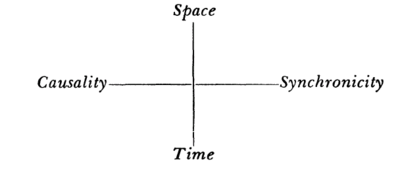Synchronicity
Review
I've finished a review of the substantive part of the 2010 edition. There are two sorts of distinct phenomena Jung treats, but the unifying concepts are simultaneity and meaning. In the case where there is any possibility of a causal relation between events in such a phenomenon then synchronicity is excluded. The canonical case which he draws out in explicit detail is the astrology vs marriage data. This is not a communication phenomena so it is a pure display of the psychical phenomenon in question.
He is implicitly operating against two kinds of material, the mantic traditional element such as those associated with Western Astrology, the I Ching, etc. where the form of synchronicity is expected to be explained (ultimately) by some operations of meaning and the archetypes.
The other are the cases of telepathy (the non-fraud cases such as the Sinclairs), the experiments of Rhine, and the Swedenborg case, which are communication acts but for which causality is considered unacceptable.
The astrology case shows the defined thing in its pure form, where meaning is produced in a manner similar to apophenia/pareidolia whereas the interpersonal communication in the Rhine experiments and Swendenborg's knowlege of the fire in Stockholm are actually evidence of some as yet unknown causal principle effecting the communication (imo). So these latter are only provisionally and without examination synchronistic in contrast to the type case of the astrology data.
In a long chapter on religion and eastern culture, Jung discusses the principle in relation to those ways of thinking to in the end reject them in favor of modern rationalism.[1] Elsewhere, Jung has made clear that he has introduced the principle partially in response to issues that are raised with respect to causality in physics which he had been able to discuss with figures of his time such as Einstein and Pauli which is brought to a complete exposition in the concluding 4th chapter.
Notes
- ↑
Synchronicity, C.G.Jung, 3rd ¶ from end of Ch. 3:
"The idea of synchronicity and of a self-subsistent meaning, which forms the basis of classical Chinese thinking and of the naïve views of the Middle Ages, seems to us an archaic assumption that ought at all costs to be avoided. Though the West has done everything possible to discard this antiquated hypothesis, it has not quite succeeded. ... It was modern psychology and parapsychology which proved that causality does not explain a certain class of events and that in this case we have to consider a formal factor, namely synchronicity, as a principle of explanation."

